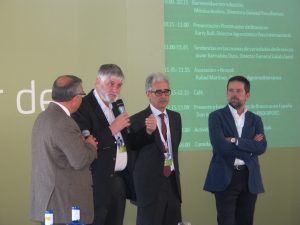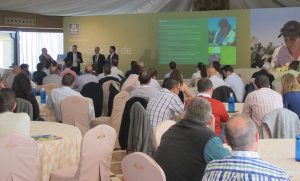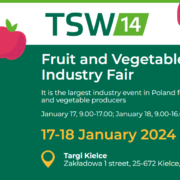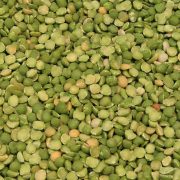Hands on brassica
For optimum quality of brassica while seeking higher returns for producers of these crops, Yara has launched its PlantmasterTM of Brassica presented last November 11 in Murcia. This document, the result of over two years of work, collected the most useful information about nutrition in crops such as broccoli, cauliflower or cabbage as Christmas.
The above and many other varieties of brassicas have become in recent decades in crops of great economic interest in our country. However the beginning of its cultivation dating back hundreds of years ago. During the day we met the source crop Brassica oleracea -Brassica L- and its evolution throughout history, being a genre characterized by its ability to hybridize.
Its use has increased dramatically in recent years largely by increased awareness of its culinary and nutritional characteristics. In this sense, the event was an activity in which the holder of a Michelin star chef Paul Gonzalez-Conejero, emulating the known television program 80, gave some tips for getting the most out of these horticultural products.
The launch took place in Murcia, a region that leads the national production of brassica or cruciferous. The opening ceremony was conducted by Monica Andres, CEO of Yara Iberian, who thanked all those present for their support and stated that this PlantmasterTM is but one example of the commitment of Yara in their eagerness to share their knowledge with the sector.
Barry Bull, agronomic specialist Yara International, was responsible for presenting the document and make a brief review of the role of each of nutrients in crops of this kind. He stressed the importance of nitrogen and its management is very important in these families, more so than other crops. “Brassica and nitrogen are closely linked,” said Barry. The demand for this nutrient increases at key times and availability is crucial for obtaining higher production. Although all nutrients play an important role in certain stages of cultivation are especially important, next to nitrogen, the -help to reduce the incidence of tip burn-Calcium, Sulfur Improves flavor- and Boro Improves Quality and also it reduces crop losses burn-tip.
In addition, Barry Bull stressed the importance of knowing the balance of nutrients in our soil and / or culture in order to detect possible deficiencies or imbalances and act accordingly. In this regard, he took the opportunity to present MegalabTM, the soil analysis service, solutions and foliar Yara and has recently been launched in Spain with important news.
The day also featured three interesting presentations that helped contextualize the current situation of the sector. On the one hand, Javier Bernabeu Durá manager Sakata Seed Ibérica presented the trends of the new varieties of brassicas. Sakata, with over 100 years of activity in the market for seeds, provides value-added products able to provide maximum satisfaction to the entire production chain, from farmers to the end consumer.
In this regard, Javier Bernabeu noted that new programs are aimed at improving satisfy all links in the supply chain compared to traditional improvement, which was limited in responding to the needs of production (resistance to diseases and pests , etc.). The head of Sakata Seed Iberian also noted that the increased consumption of such products makes them horticultural crops with high market value. The result is an increased interest in their improvement for obtaining tougher and with better organoleptic varieties.
 On the other hand, Juan Marín Bravo, president of the Association of Producers and Exporters of Fruits and Vegetables of the Region of Murcia (Proexport), went through his presentation the current situation and future prospects brassica crop in Spain. He is also manager Country Group Lorca. This business group currently manages around 4,500 hectares of crops. This dual role makes Juan Marin a benchmark and its relationship with the production sector is very narrow.
On the other hand, Juan Marín Bravo, president of the Association of Producers and Exporters of Fruits and Vegetables of the Region of Murcia (Proexport), went through his presentation the current situation and future prospects brassica crop in Spain. He is also manager Country Group Lorca. This business group currently manages around 4,500 hectares of crops. This dual role makes Juan Marin a benchmark and its relationship with the production sector is very narrow.
Juan Marin Yara investment thanked the Norwegian multinational performed constantly developing new tools and products that respond to market demand. Brassicas are crops with high economic interest in regions such as Murcia and Navarra, and Yara, aware of this, it has developed a catalog that allows the subscriber to develop a formula tailored to the needs of these crops.
During his speech, Juan Marin gave an overview of current market trends and challenges to which the production and marketing of these horticultural products faces. In the first case, the market is tending towards greater diversity of crops, the development of more resistant varieties and differentiation of varieties for processing or for fresh consumption. Furthermore, it is tending to diversify production areas in our country so that the supply is continued throughout the year. As for marketing, new challenges undergo open-and develop an appropriate logistics for more destinations lejanos- markets and consolidate existing markets and closer. It is therefore necessary to encourage agreements between producers and the promotion of consumption through promotional campaigns.
In this sense, Juan Marin gave way to Rafael Martinez Soriano, president of + broccoli and CEO Agromediterránea, producer, processor and distributor of horticultural products. The Association + broccoli emerged in 2010 in order to promote the consumption of this cruciferous emphasizing its many health benefits.
 The event took place at the restaurant La Cabana-Buenavista, whose chef Pablo González-Conejero has a Michelin star. The chef was on hand to introduce the activity with which the event closed. This activity was the development of recipes with broccoli, cauliflower and other varieties of this genre as a key ingredient. The participants, who appreciated and put into value the quality of the information contained in the PlantmasterTM, could then sample the menu. The event also featured the intervention of a sommelier who was selecting the most appropriate wines to pair with the dishes.
The event took place at the restaurant La Cabana-Buenavista, whose chef Pablo González-Conejero has a Michelin star. The chef was on hand to introduce the activity with which the event closed. This activity was the development of recipes with broccoli, cauliflower and other varieties of this genre as a key ingredient. The participants, who appreciated and put into value the quality of the information contained in the PlantmasterTM, could then sample the menu. The event also featured the intervention of a sommelier who was selecting the most appropriate wines to pair with the dishes.
Source: Yara Iberian













